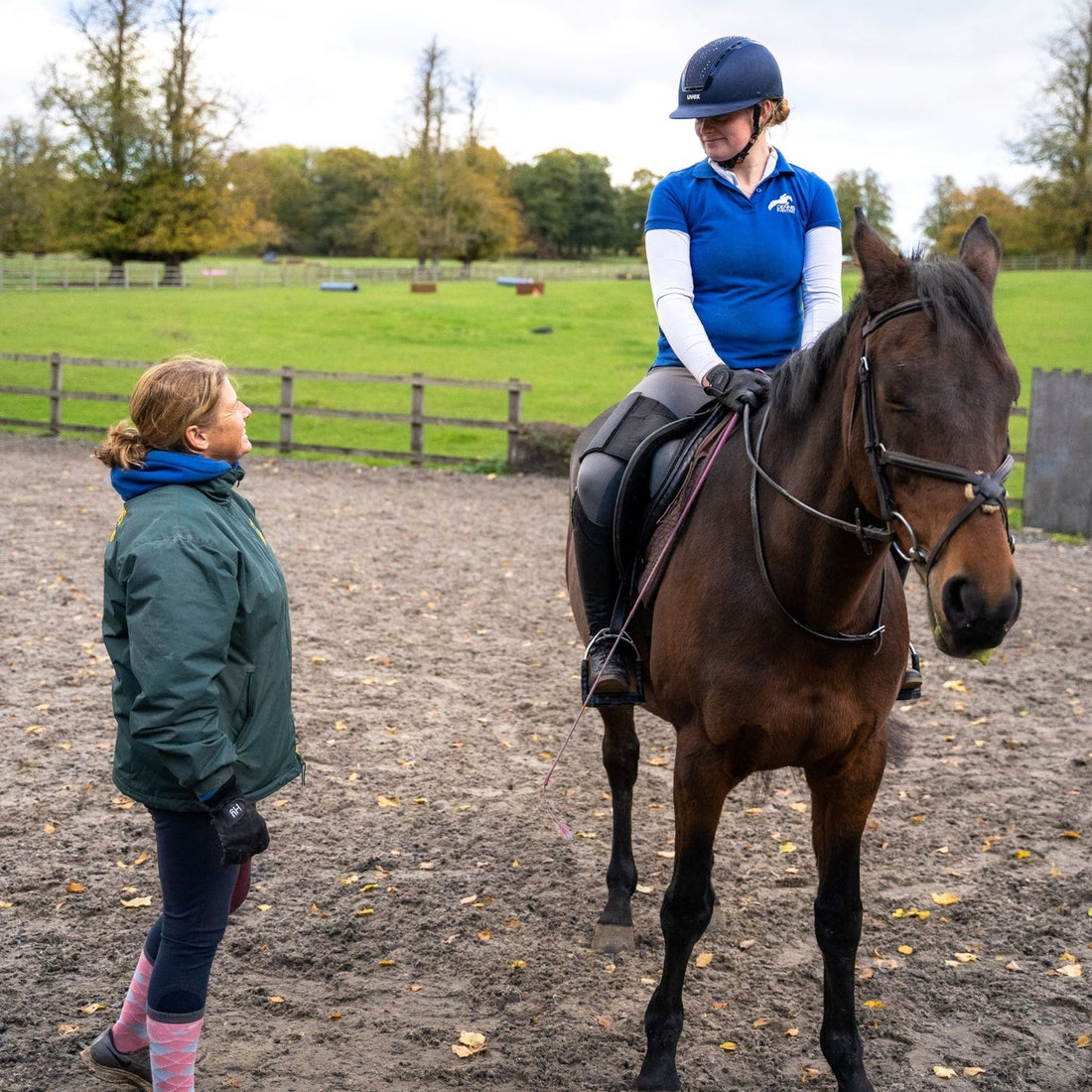Taking responsibility
Share
Ok... I wouldn’t be the most popular instructor!
I know this because I always expect my clients to improve, most do but often the progress is slow and frustrating. I never believe it’s the horse that’s at fault but I believe we, as riders, are responsible for understanding how our horses move and their way of going. It’s hugely important we accept what we are doing to impact their performance. In my experience most horses enjoy their work.
As a professional, who always rode the more challenging horses, I would constantly find ways of working with and supporting these horses to enable them to do the job required. I try to inspire and encourage them enjoy the work, be more willing and a happier horse. It’s an ethos I have had the whole of my career.
I have insisted that I can’t ride horses in tight nose bands and that certain horses can’t be ridden with spurs. I have proven to even the most conventional owner that particular horse’s just won’t accept that. I was worried about broaching the subject but when asked to trust me they had to agree. I have always as a rider had the ability to understand what the horse underneath me needs and was able to give that support, therefore get results. Don’t get me wrong I am not a medal winning rider. I came to the sport pretty late in life but I have got an enormous amount of pleasure helping retrain and in fact train horses of all abilities and back grounds to give them a job or purpose in life. I have failed but this is usually because I am the last hope for these horses. I see them only when all hope has left them that they can make someone see their suffering.
To illustrate this I will tell you about a couple of horses which I have ridden and produced over the years. The first horse I will tell you about was a lovely big dressage bred mare; she had been sold to someone who was totally out of her depth. The mare was strong, sharp and pretty terrified by life. When she arrived she had already broken her owner’s wrist and ribs very badly. In the 6 months she had owned the horse she had never managed to canter her, apart from the 2 times she ended up in hospital.
I found this lovely 5 yr old mare to be very willing. She was totally unbalanced and it terrified her. She had been produced by a professional for the 4 year old classes. I struggle with the concept of these classes; it troubles me that just because the classes are there it does not mean that all 4 year olds will be ready. I knew this was going to be a tough case as the rider by now was understandably terrified of her horse. I tried to explain that the fact that her horse had no natural balance and couldn’t even do simple ground work, without any gadgets, was most definitely the problem. Basically she had been carried by a strong rider and now she felt she was fending for herself. She was extremely nervous about this, resulting in her being unpredictable and sharp.
I worked on the ground work first. I have always found it incredibly important to teach a horse how to engage their core and carry themselves correctly, before they carry a rider. This has enabled me to train these ‘untrainable horses’. I have always believed that mental follows physical with horses. If a horse is physically in the right place, strong and able to do the job, they will almost always do it.
I did a massive amounts of ground work. I used every trick I knew to desensitise this beautiful terrified horse and it worked. I ended up Eventing her for the owner and she would then regularly come for lessons and was starting to enjoy her horse. I changed the saddle (not a popular make but one the horse was extremely happy in). I had made this reactive, sharp and terrified horse into one which was now extremely compliant. She was no longer reactive to her rider being loose in the saddle, unbalanced or being one sided.
I thought I had done an amazing thing, until she took the horse home. I didn’t see them for 3 months and when they did come for a lesson I was shocked and upset. The reason was that I had made this horse compliant! She was now wearing a badly fitting, tight saddle, which to be honest was only a saddle to give the rider the support she needed. She had lost her flashy and loose way of going, lost a lot of muscle from her top line and like a scene from black beauty I knew I was responsible for this. The only voice the horse had previously was to be reactive, but from months of me desensitising her I had made it possible for the rider to learn nothing from this experience. The moment the horse became complaint was the second this rider didn’t come for lessons with me because I expected more from her than I expected from her horse.
I get that there has to be a happy medium. They have to give as well but just remember the only voice they have is to react. It’s up to us to try and understand what it is they are saying and asking from us. This lovely horse took it and took it until it couldn’t take anymore and someone ended up getting very badly hurt. Unfortunately I would think it was the horse who took the blame.
What I would like people to realise is maybe these more tricky horses are not tricky at all, maybe they are struggling. No horse really just wants to be naughty, aggressive or wants to make life difficult. They have developed behaviours to enable them to avoid doing something they find difficult. So, next time your horse behaves unexpectedly, think... are they pain?

